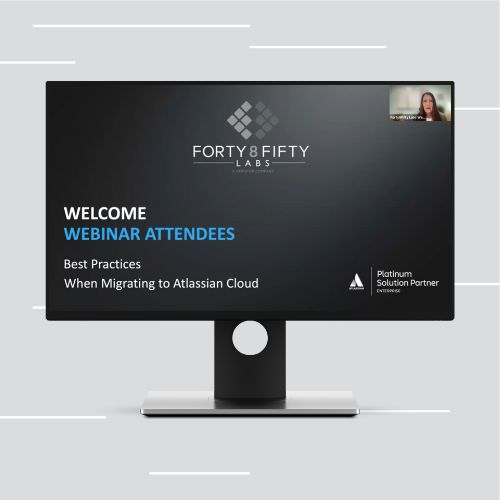Verinext subsidiary Forty8Fifty Labs has performed dozens of large Atlassian Cloud migrations to AWS and through its experience has built a proven methodology for success. From pre-migration assessments and migration readiness planning to test passes and team communications, there are four core considerations to achieve the cloud migration success that can get your teams leveraging the high reliability and security of Atlassian Cloud in AWS today.
From Forty8Fifty Labs’ field-proven experience, a successful Atlassian Cloud migration should include these vital steps:
- Understand your Atlassian instance. Knowing your Atlassian environment, top to bottom, will ensure that you have insight into any migration barriers early. Before initiating any migration, it is advised that you perform a comprehensive assessment to uncover your instance’s complexities. This assessment should include:
- User Assessment – Knowing all of your active users and cleaning up your user accounts should be performed well in advance of your migration to avoid duplication or over subscription of user accounts.
- License Assessment – Likewise, make sure your licenses are properly sized for the cloud so that you don’t uncover license restrictions once you migrate.
- Vendor Assessment – Ensure that you have a detailed mapping of the vendor apps you have, what you truly need and those you may no longer require once in the cloud.
- Workflow Assessment – Detail the workflows you need and the applications they use so you can best understand if any refactoring is necessary to make your new Atlassian Cloud instance whole.
- Know what Jira Cloud Migration Assistant can and cannot do. It’s important to understand that the Atlassian landscape is constantly changing. The Jira Cloud Migration Assistant tool is a great solution but doesn’t cover all the bases. Even as Atlassian consistently evolves the tool, there will still be shortcomings that are not yet supported. Knowing up front where those gaps are will help you achieve a much more seamless migration in the long run.
- Architect cohesive communication. Your Atlassian Cloud migration may touch multiple resources and teams. It’s important to institute a process for cohesive communication across those resources so everyone is working harmoniously, not in silos. Use the “move ticket” as the migration bible across all your resources to maintain communication continuity for a unified team approach.
- Practice, and practice again. When it comes to your Atlassian Cloud migration, practice does make perfect. Its advisable to perform a dress rehearsal with test passes in multiple iterations. Use the first test pass to fully understand how to move the data and what considerations you need to proactively address. Use the second test pass to fully understand the migration timing and the window you’ll need to complete the process. Consider a third test pass if there are additional refinements you discover along the way that you want to ensure have been ironed out before the full migration is initiated.
These best practices and more are covered in this valuable on-demand webinar: Best Practices When Migrating to Atlassian Cloud. Here Forty8Fifty Labs experts, Ben Chou and Darren Brown are joined by Angela Bartlett, Partner Solution Architect, AWS. They cover these Atlassian Cloud migration best practices in detail as well as the key benefits of using Atlassian Cloud in AWS. View the webinar here:
Securing Atlassian Cloud in AWS
During the webinar, AWS’ Angela Bartlett covers some of the top advantages of using Atlassian Cloud in AWS. AWS has been Atlassian’s exclusive cloud partner since 2013. This ongoing relationship has been built on several key advantages offered by AWS including continuous integration, built-in security, disaster recovery and assured compliance and governance.
Specifically, in security, AWS stands out as offering unparalleled security services that are proven to be even more secure than hosting Atlassian on premises. AWS delivers physical data center security, separation of the network as well as isolation of server hardware and storage. AWS customers also inherit all of AWS’ extensive security best practices so they can assure they are meeting regulatory compliance and governance demands.
AWS is also highly available. It has one of the most extensive, secure and reliable global infrastructures of any cloud provider. Atlassian Cloud currently is hosted in six of AWS’ 31 geographic locations around the world, with multiple availability zones. Atlassian Cloud also uses AWS compute, storage, network and data services to build its product and platform components, taking advantage of this unparalleled cloud availability.
By relying on Atlassian Cloud hosted in AWS, customers can be assured that their instance meets the most stringent disaster recovery, backup, security and compliance guidelines to mitigate risk and operate with confidence.
If you are interested in learning more about Forty8Fifty Labs’ Atlassian Cloud migration services, visit here to learn more.







